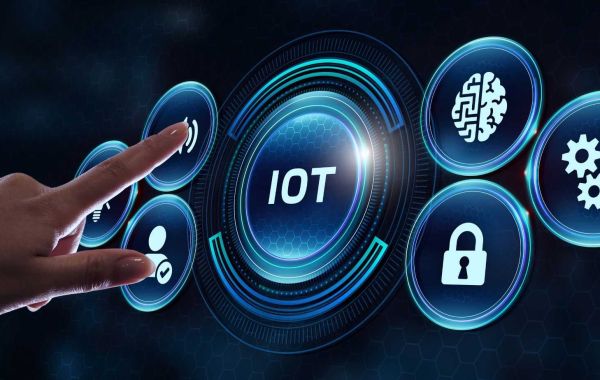The History of IoT
The concept of the Internet of Things (IoT) has been around for more than 20 years, but its widespread application is a relatively recent phenomenon. IoT technology was first conceptualized in 1999 when the Auto-ID Center at MIT proposed a global network of interconnected devices that could communicate with each other and be managed remotely. This early version of IoT focused on using radio frequency identification (RFID) technology to create a ubiquitous system of sensors and data-gathering devices that would be connected to the Internet.
Since then, the Internet of Things has evolved into a much more comprehensive system of interconnected objects and devices. Today, IoT technology is used to connect and control smart home devices, medical devices, automotive systems, wearable tech, industrial machinery, and more. It is estimated that by 2025, there will be more than 75 billion connected devices worldwide.
IoT technology has revolutionized how we interact with and control our environment, and has opened up a world of possibilities for businesses and consumers alike. The technology has the potential to create more efficient and automated systems that can streamline processes and reduce waste.
How IoT Works
The Internet of Things (IoT) is an interconnected network of physical objects—including people, devices, sensors, and other items—that are able to collect, exchange, and analyze data. Through the IoT, these objects can be connected to the internet and interact with one another in real time.
IoT networks operate through a combination of hardware and software, including sensors, actuators, embedded systems, communication protocols, data analytics, and applications. Sensors and actuators collect data about the environment and transmit it to the cloud or other IoT platforms. Embedded systems are used to process the data and make decisions based on the information received.
Communication protocols like Bluetooth or Wi-Fi are used to transfer data between the sensors, actuators, and the cloud. Finally, applications help store, manage, and analyze the data collected.
Once data is collected from the environment and transmitted to the cloud, powerful analytics tools can be used to gain insights from the data.
This data can then be used to make more informed decisions about products and services, as well as improve user experience. For example, predictive maintenance algorithms can be used to detect potential problems in machinery before they become serious.
The potential for IoT networks is vast and the possibilities are limited only by imagination and also there are challenges of iot in retail industry. From improving customer experiences in retail stores to helping farmers optimize crop yield, IoT networks are already making waves in the world today.
Benefits of IoT
- Increased Efficiency: IoT technology makes it possible for businesses to increase their efficiency by automatically collecting data and managing processes without the need for manual intervention. This can lead to significant cost savings and improved operational performance.
- Improved Safety and Security: IoT-enabled devices can provide better security and safety by collecting real-time data and providing notifications when certain thresholds are reached or when certain activities take place.
- Enhanced User Experience: IoT technology makes it possible for users to have an enhanced user experience by connecting their devices and collecting data from them, allowing them to customize their environment according to their needs.
- Increased Productivity: By automating mundane tasks, IoT technology can help increase the productivity of both individual workers and entire organizations. This can be done by automating processes and collecting data that can then be used to make informed decisions.
- Improved Customer Experience: By gathering customer data, IoT technology can help improve customer experience by providing tailored services and products that meet the needs of each individual customer.
- Improved Quality of Life: IoT technology can also improve quality of life by helping people stay connected with each other, even when they’re apart. This can be done through various apps and services that allow people to easily share information and connect with each other.
Drawbacks of IoT
- Security Risks: One of the major drawbacks of IoT is the potential security risks it can bring. Since all the devices are connected to one another, they are vulnerable to malicious attacks from hackers who can gain access to personal information stored in the device.
- Privacy Issues: Another issue with IoT is privacy concerns. Connected devices can collect and store personal data, which could be used for targeted advertising or other marketing strategies.
- Dependency: People who use IoT devices may become too dependent on them, making them less capable of completing tasks on their own. As more devices are connected, the risk of device failures increases and the ability to troubleshoot problems decreases.
- Unreliable Connectivity: As with any other wireless technology, IoT requires reliable connectivity to work properly. If the connection is interrupted or disrupted, then the device will not be able to communicate with other devices or perform its tasks.
How to Get Started with IoT
If you are looking to get started with IoT, the first step is to understand the basics of how it works. Once you have that knowledge, you can then look into the different types of products and services available, such as sensors, devices, cloud computing, and analytics, that can be used to create your own network of connected devices. After deciding on a product or service, you will need to decide on the right infrastructure for the project and set up the necessary hardware and software. Finally, you will need to monitor your network, maintain security protocols, and continually update your system as new technologies become available.
Conclusion
The Internet of Things (IoT) has been a revolutionary technology, connecting people to their environment in ways that were never before possible. It has enabled unprecedented levels of efficiency and access to information. However, it is important to consider the potential drawbacks of IoT before taking the plunge into its world. Utilizing the right IoT application development services can help to ensure that your IoT projects are successful and secure. With the right infrastructure in place, you can unlock the immense potential of IoT and stay connected with your environment like never before.








